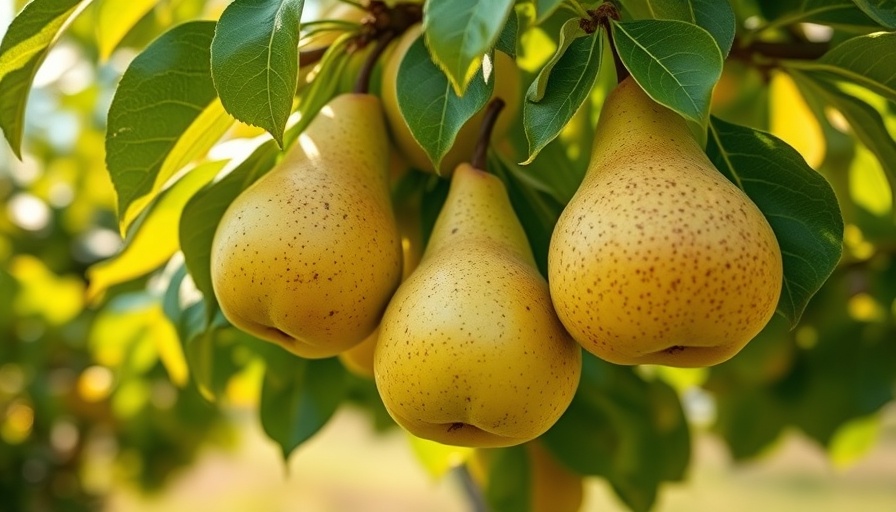
Unlocking the Secrets of Cold-Hardy Pear Varieties
Living in colder climates often comes with challenges when it comes to gardening. However, for those in hardiness Zones 4 and below, the dream of cultivating pear trees can become a reality with the right selection of varieties. Cold-hardy pears not only survive but can thrive even in harsh winter conditions, allowing northern gardeners to enjoy the fruitful bounty of these delicious trees.
Why Choose Cold-Hardy Pears?
Cold-hardy pear trees are specifically bred to withstand extreme temperatures, making them ideal for regions that experience freezing winters and varying climates. Varieties such as mild and flavorful Ayers and the disease-resistant Bosc are perfect examples of trees that can endure these conditions. Notably, some of these pears can survive temperatures as low as -60°F, a true testament to their resilience. Such attributes make these varieties a must-have for gardeners looking to enhance their landscapes.
Exploring the Best Cold-Hardy Pear Varieties
Here’s a closer look at several of the finest cold-hardy pear varieties that can thrive in northern regions:
- Ayers: A self-pollinating cultivar that thrives in Zone 3, producing sweet, medium-sized yellow and blush fruits.
- Bosc: Renowned for its beautiful, elongated shape and excellent flavor, this cultivar is a favorite among pear lovers.
- Clapp’s Favorite: This hybrid is known for its juicy sweetness and is harvested early in the season.
- Flemish Beauty: Not only cold-hardy but also richly flavored, making it a wonderful choice for colder climates.
- Summercrisp: As its name suggests, this variety is perfect for summer harvests, offering a delightful crunch and refreshing taste.
In total, there are 19 amazing varieties that bring vitality and flavor to northern gardens, each with unique qualities that cater to different gardening needs.
Understanding Pear Species
When planting pears, it's essential to be aware of the different species available. The European pear (Pyrus communis) is the most commonly grown, but Asian pears (P. pyrifolia) and Russian pears (P. ussuriensis) also show cold hardiness, albeit with differences in taste and size. Knowing which species suits your climate can lead to greater success in your gardening endeavors.
Benefits of Cold-Hardy Pear Trees
Cold-hardy pear varieties provide several advantages. They enhance garden diversity, contribute to better air quality, and attract beneficial wildlife such as pollinators and birds. Furthermore, they're not only beautiful to look at during all four seasons but also offer the satisfaction of harvesting your own fruit, promoting a rewarding connection with nature.
Cultivation and Care Tips
Growing cold-hardy pears requires thoughtful attention to care practices. Here are some tips for ensuring healthy growth:
- Soil Preparation: Ensure well-draining, nutrient-rich soil to promote healthy root systems.
- Water Management: Pear trees require ample water during dry spells but be cautious of overwatering that can lead to root rot.
- Pest Control: Regular checks for pests such as aphids or spider mites are critical, and using organic pest control methods can protect your crop.
- Pruning: Proper pruning enhances fruit yield and sunny exposure, helping trees maintain health and vigor.
Final Thoughts and Next Steps
By exploring the world of cold-hardy pear varieties, northern gardeners can turn their icy landscapes into lush orchards filled with delicious fruit. Embrace the opportunity to not only grow beautiful trees but also support local wildlife and create a sustainable garden environment. If you're interested in transforming your own garden into a fruitful paradise, consider diving into these cold-hardy options and incorporating them into your garden plans.
 Add Row
Add Row  Add
Add 




Write A Comment